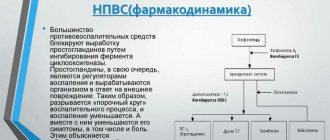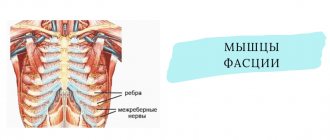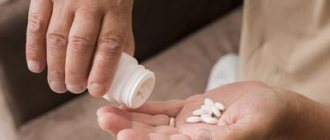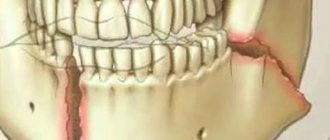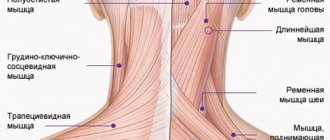Symptoms of intercostal neuralgia
By its nature, intercostal neuralgia is:
- irritation, pinching or inflammation of nerve endings in the intercostal space;
- or entrapment of the roots of the thoracic spinal nerves near the spinal column.
Basically, the pain with intercostal neuralgia is localized in the intercostal space, but pain can radiate along the pinched nerve - in the lower back, in the back, under the scapula. Spastic muscle contractions, redness or paleness of the skin, and loss of skin sensitivity in the area of the affected nerve may occur. The pain with intercostal neuralgia is very strong, burning, constant, without attacks
Intercostal neuralgia - clarifying the diagnosis
Intercostal neuralgia is sometimes confused with heart pain. Although it is not so difficult to distinguish them.
With intercostal neuralgia, the pain intensifies with deep inhalation or exhalation, or any other movement of the body, including coughing or sneezing, or during physical activity. Sometimes it’s painful and you can’t even take a deep breath - attacks of burning pain appear along the intercostal spaces (pain can only be felt on one side of the chest).
Heart pain with angina pectoris does not change with deep inhalation or exhalation, from a change in position or movement in the chest; usually relieved with nitroglycerin; may be accompanied by irregular pulse rhythm, a drop or increase in blood pressure.
With intercostal neuralgia, the pain may intensify with palpation - you can feel the direction of the pain along the nerve. Aching or paroxysmal pain, spreading along the trunk of the nerve or its branches, may be accompanied by other unpleasant sensations - burning, tingling, numbness. By the way, this is why intercostal neuralgia can cause pain not only in the heart area, but also under the shoulder blade, in the back, and lower back (they can sometimes be confused with kidney pain).
It is important to differentiate an attack of intercostal neuralgia and myocardial infarction, which can also cause severe pain that is not relieved by nitroglycerin. Therefore, if there is a sudden attack of pain in the heart area, you must definitely call an ambulance and have an electrocardiogram done, since a heart attack requires urgent medical attention.
Causes of intercostal neuralgia
There are many causes that can cause intercostal neuralgia , but essentially the pain is caused by either a pinched spinal nerve root in the thoracic spine or pinched or irritated intercostal nerves in the intercostal space.
Pinched roots are most often caused by various manifestations of osteochondrosis, but other causes are also possible (spondylitis, ankylosing spondylitis, and others).
However, more often, attacks occur as a result of irritation of the nerve due to its pinching by the intercostal muscles due to inflammation or muscle spasm.
The cause of a spasm and, accordingly, an attack of neuralgia can be mental stress, traumatic effects, excessive physical activity without the necessary preparation. Spasm and inflammation of the intercostal muscles can be caused by hypothermia or infection. Sometimes intercostal neuralgia occurs due to lung diseases.
An attack of intercostal neuralgia can occur due to poisoning, with changes in the spine caused by hormonal disorders in menopausal women. The cause of neuralgia can be allergic diseases, diseases of the nervous system (multiple sclerosis, polyradiculoneuritis). It is possible to develop intercostal neuralgia with an aortic aneurysm, diseases of the internal organs, or after a herpetic infection.
Neuralgia can also be caused by microtrauma due to constant physical stress (for example, when lifting something heavy), especially in combination with hypothermia.
The development of the disease can be caused by alcohol abuse (due to the toxic effects of alcohol on the nervous system), as well as diabetes mellitus and a lack of B vitamins in the body (observed with stomach and duodenal ulcers, gastritis, hepatitis, colitis) - due to a violation metabolism in nervous tissue.
It should be noted that symptoms resembling intercostal neuralgia are possible due to excessive tone (spasm) of one or more back muscles. In this case, an increase in pain is typical when the affected muscle is stretched (bending forward, moving the shoulder or shoulder blade).
Components included in ointments
Medicine now uses a huge number of external agents in the form of ointments and gels that help fight the causes and symptoms of neuralgia. They all contain different substances, so they do not have the same effects if there is intercostal neuralgia. Examples of ointments for treatment include the following:
- “Capsicam” or “Finalgon” warms up the inflamed area well; due to the dilation of blood vessels, the flow of blood, oxygen, and nutrients is ensured.
- “Indomethacin”, “Naklofen” have an anti-inflammatory and anti-edematous effect, and also quickly eliminate pain.
- Pepper tinctures have local irritant properties.
- "Menovazin" includes anesthesin, which perfectly relieves pain.
- The best ointment for intercostal neuralgia with bee and snake venom effectively restores the damaged structure of the nervous tissue.
Treatment of intercostal neuralgia
Treatment of intercostal neuralgia usually consists of two stages. First, it is necessary to relieve the pain that accompanies intercostal neuralgia, then it is necessary to treat the disease that caused the nerve injury.
In the first week of the disease, it is better to observe bed rest for 1-3 days, preferably lying on a hard surface; it is best to place a shield under the mattress. To relieve pain, painkillers are prescribed, usually from the NSAID group, which not only relieve pain, but also have an anti-inflammatory effect. In addition, muscle relaxants are prescribed to relieve muscle spasms and sedatives. B vitamins (B1, B6, B12) are recommended - they help restore damaged nerve structures. During attacks, light, dry heat helps.
After the acute symptoms have been relieved, it is necessary to carry out a diagnosis and determine the cause that caused the attack of intercostal neuralgia. If this is any general disease (infectious, cold, allergic, diabetes, nervous system disease, depression), it is necessary to treat it.
If intercostal neuralgia is caused by a disease of the spine, that is, it is of a vertebrogenic nature, comprehensive treatment of the spine is recommended. To restore the correct physiological position of the thoracic and cervical spine in cases of intercostal neuralgia, courses of therapeutic massage, manual therapy, and physical therapy are conducted.
Physiotherapy, acupuncture, and laser therapy provide good results for vertebrogenic intercostal neuralgia. To prevent the disease from becoming chronic with frequent attacks, you need to reduce physical activity, not abuse alcohol, and avoid stressful situations if possible.
In the first week of the disease, it is better to observe bed rest for 1-3 days, preferably lying on a hard surface; it is best to place a shield under the mattress. During attacks, light, dry heat helps.
To relieve pain, take painkillers and sedatives. Physiotherapy, acupuncture, and laser therapy provide good results for intercostal neuralgia. It is advisable to take B vitamins (B1, B6, B12). To prevent the disease from becoming chronic with frequent attacks, you need to reduce physical activity, not abuse alcohol, and avoid stressful situations if possible.
To restore the correct physiological position of the thoracic and cervical spine in cases of intercostal neuralgia, courses of therapeutic massage, manual therapy, and physical therapy are conducted.
If conservative treatment does not help, then surgical treatment is performed (for example, osteochondrosis or disc herniation, which cause attacks of intercostal neuralgia).
What to do for acute back pain
Back pain occurs periodically in 60-80% of the population. This is the second most common cause of temporary disability after acute respiratory viral infections. Acute back pain can begin suddenly and end just as suddenly, but it can subside slightly and become chronic. This should not be tolerated; it is better to seek medical help immediately.
Just don't panic
The appearance of severe back pain does not mean that a person cannot be helped; in most cases, all this can be successfully treated, which means there is no need to panic. But it is important to know how to help yourself and reduce pain, and then immediately consult a doctor. Contacting a specialist is necessary, since back pain is caused by many diseases and they require different approaches to treatment.
How to alleviate your condition yourself
Sometimes the pain syndrome is so severe that the person remains in the position in which the attack caught him. In this case you need:
- Lie on your back on a hard surface, or on the floor, with a blanket on it; if you can’t straighten your back, then you need to take a position that causes minimal pain.
- Ask your loved ones to give a tablet of any painkiller (Analgin, Paracetamol, Diclofenac, Ibuprofen, Nise, etc.), all of them can be bought at the pharmacy without a prescription:
- Diclofenac
is the most effective drug from the group of nonsteroidal anti-inflammatory drugs (NSAIDs); in emergency cases, it is better to use 100 mg rectal suppositories - the drug is instantly absorbed in the rectum and begins to act; contraindicated for diseases of the gastrointestinal tract (GIT), as it inhibits the effect of substances that protect the gastrointestinal mucosa from any unwanted effects; - Nise (nimesulide)
is a more modern drug from the NSAID group, has virtually no negative effect on the gastrointestinal tract, but is less effective than Diclofenac; for acute pain, you can take a 100 mg tablet; - Analgin (metamizole)
is a pain reliever; for severe pain, you can take a 500 mg tablet; Be careful: you should not take this medicine often, it gives many side effects. - Apply any pain-relieving drug for external use to the skin over the painful area: Menovazin rubbing solution, Diclofenac ointment, Pentalgin gel, Voltaren emulgel and other over-the-counter drugs:
- Menovazin
- a solution for rubbing contains two substances with a local anesthetic effect (procaine, benzocaine) + a local irritant and vasodilator menthol; the solution is applied to the skin and rubbed 2 – 3 times a day; - Diclofenac ointment and Voltaren emulgel
- contain the active substance diclofenac, which has a local anesthetic effect; apply to the skin over the painful area 2 – 3 times a day; - Pentalgin gel with the active ingredient ketoprofen from the NSAID group
- excipients have an irritating and vasodilating effect; applied to the skin 2 – 3 times a day. - Call an ambulance; the doctor will give you an anesthetic injection (usually injectable solutions of NSAIDs) and advise you on the best course of action: call a doctor at home or go straight to a specialized clinic.
When you need to see a doctor urgently for back pain
You should immediately contact the clinic if you have severe pain in the back:
- appeared after an injury;
- accompanied by high body temperature and malaise;
- as a result, problems with urination and defecation appeared;
- accompanied by impaired motor function of the limbs and their numbness;
- has a girdling nature, covering not only the back, but also the abdomen (suspicion of acute pancreatitis);
- radiates to the left hand (suspicion of myocardial infarction);
- grows, cannot be removed with tablets and ointments.
It is impossible to help yourself in such a state. To avoid serious complications, you need to consult a doctor.
Treatment of intercostal neuralgia with a new drug - NANOPLAST forte therapeutic patch
In the therapeutic treatment of intercostal neuralgia, various drugs are used, such as NSAIDs, analgesics, etc. All of these drugs are effective, but with prolonged use they can cause harm to the body. Therefore, it is very important to minimize side effects and increase the effectiveness of treatment for intercostal neuralgia. A new generation drug can help with this - the pain-relieving anti-inflammatory medical patch NANOPLAST forte.
In the treatment of intercostal neuralgia, the therapeutic plaster NANOPLAST forte is highly effective, it relieves pain and inflammation, improves blood circulation in the affected area, and allows you to reduce the dose of painkillers and anti-inflammatory drugs.
For intercostal neuralgia, the therapeutic plaster NANOPLAST forte is applied to the intercostal area (avoiding the heart area) or to the projection of the exit of the spinal nerves, usually pinched due to osteochondrosis to the right or left of the spine in the thoracic region, depending on the location of the pain. It is possible to simultaneously use the patch in the intercostal area (where the pain is localized) and at the site of the projection of the corresponding nerve in the thoracic spine. It is usually recommended to use the patch in the morning for 12 hours, but it can also be used at night. The duration of the course of treatment of intercostal neuralgia with a therapeutic patch is from 9 days.
High efficiency, unique composition, long-term (up to 12 hours!) therapeutic effects, ease of use and affordable price make NANOPLAST forte the drug of choice in the treatment of intercostal neuralgia.
Read more about NANOPLAST forte
Turpentine ointment
This remedy works great for intense pain. This drug is considered one of the most accessible and inexpensive. Every person will be able to afford to buy it. The ointment contains purified turpentine and turpentine oil. They have a warming effect and local anesthesia. Thanks to the use of ointment, it is possible to relieve swelling, pain and inflammation. But the best help is a mixture that contains not only turpentine ointment, but also honey, baby cream and bear or badger fats. This composition will help to quickly cope with the symptoms of neuralgia.
